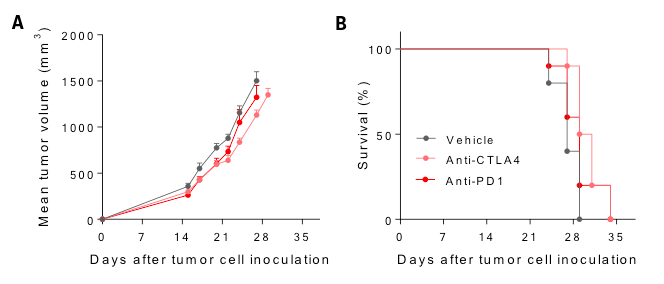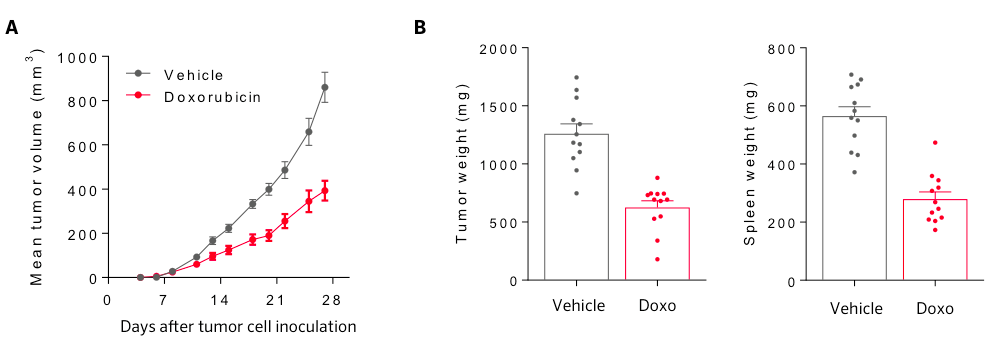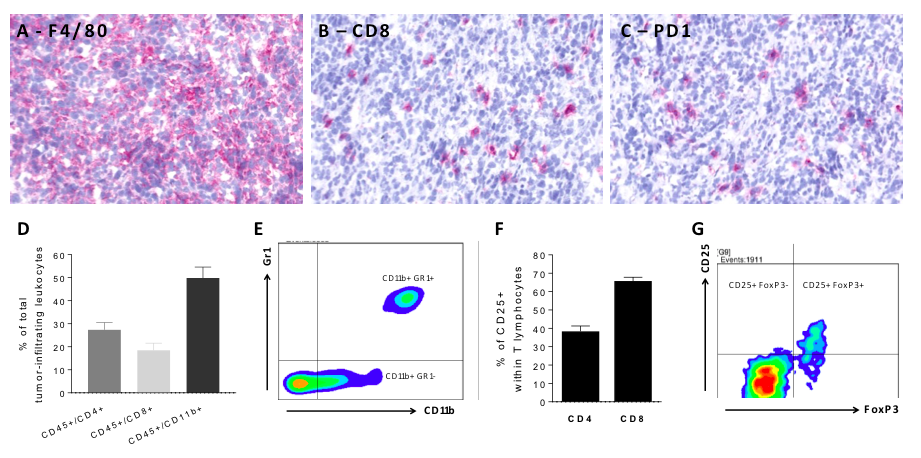In view of the success of our previous shuttle sessions, which offered the opportunity to run efficacy studies in a cost-saving manner, we are planning a new shuttle on the orthotopic (OT) 4T1 mammary fat pad mouse model, which will be held in late March.
Our syngeneic OT mammary fat pad model displays an immunosuppressive tumor microenvironment (Figure 2) and is characterized as doxorubicin-responsive (Figure 1) while not responding to standard immune checkpoint inhibitors (ICI) (Figure 3). In this shuttle session, the 4T1 mammary fat pad model will be used, through standardized study protocols, to evaluate candidate compounds as single agents and/or in combination with chemotherapies or ICI for their ability to trigger anti-tumor activity.
As cost-effective studies, only experimental test groups will be at the Sponsor’s expense, while vehicle- and reference-treated groups will be covered by Explicyte.
Contact us to reserve a place & test your candidate compound.
Figure 1. Orthotopic syngeneic 4T1 mammary fat pad model is doxorubicin-sensitive. Mice were OT implanted with 4T1 murine breast tumor cells and treated with doxorubicin (Doxo). Tumor growth was monitored overtime in vivo (A). At necropsy, tumor and spleen weights were determined (B). Doxorubicin triggers a significant decrease in tumor growth.
Figure 2. Orthotopic 4T1 breast tumor-bearing model displays an immunosuppressive tumormicroenvironment. IHC staining of 4T1 tumors shows the presence of F4/80+ macrophages (A) and of CD8+ lymphocytes (B). PD1-expressing immune cells infiltrating the tumor are also present as highlighted in (C). (D) Flow cytometry analysis of 4T1 tumors shows infiltration by CD4 and CD8 lymphocytes, and by myeloid CD11b+ cells. (E)Myeloid CD11b+ are further analyzed as Gr1- or Gr1+. (F) Flow cytometry analysis also shows the presence of activated CD25+ CD4+ and CD8+ lymphocytes. (G) Activated CD4 lymphocytes are further analyzed for FoxP3 expression to identify Treg cell population

Figure 3. OT-implanted 4T1 breast tumor-bearing mouse model is not responding to conventional immunotherapy. Mice were OT implanted with 4T1 murine breast tumor cells and exposed to anti-PD1 or anti-CTLA4 antibody. Tumor growth was monitored overtime. Tumor volume (A) and survival (B) were then determined.
Shuttle for efficacy assessment on 5-6 week experimental session
- Model / Strain: 4T1 mammary fat pad model / Balb/c mice
- Readouts: Tumor growth / Body weight / Survival
- Standard reference: Doxorubicin of ICI (e.g PD1 or CTLA4 monoclonal antibody)
- Group size: At least 10 mice per group
Optional analyses: Satellite studies for immune response profiling and MoA delineation (flow cytometry, RT-qPCR, immunohistochemistry…). Contact us for further information.



